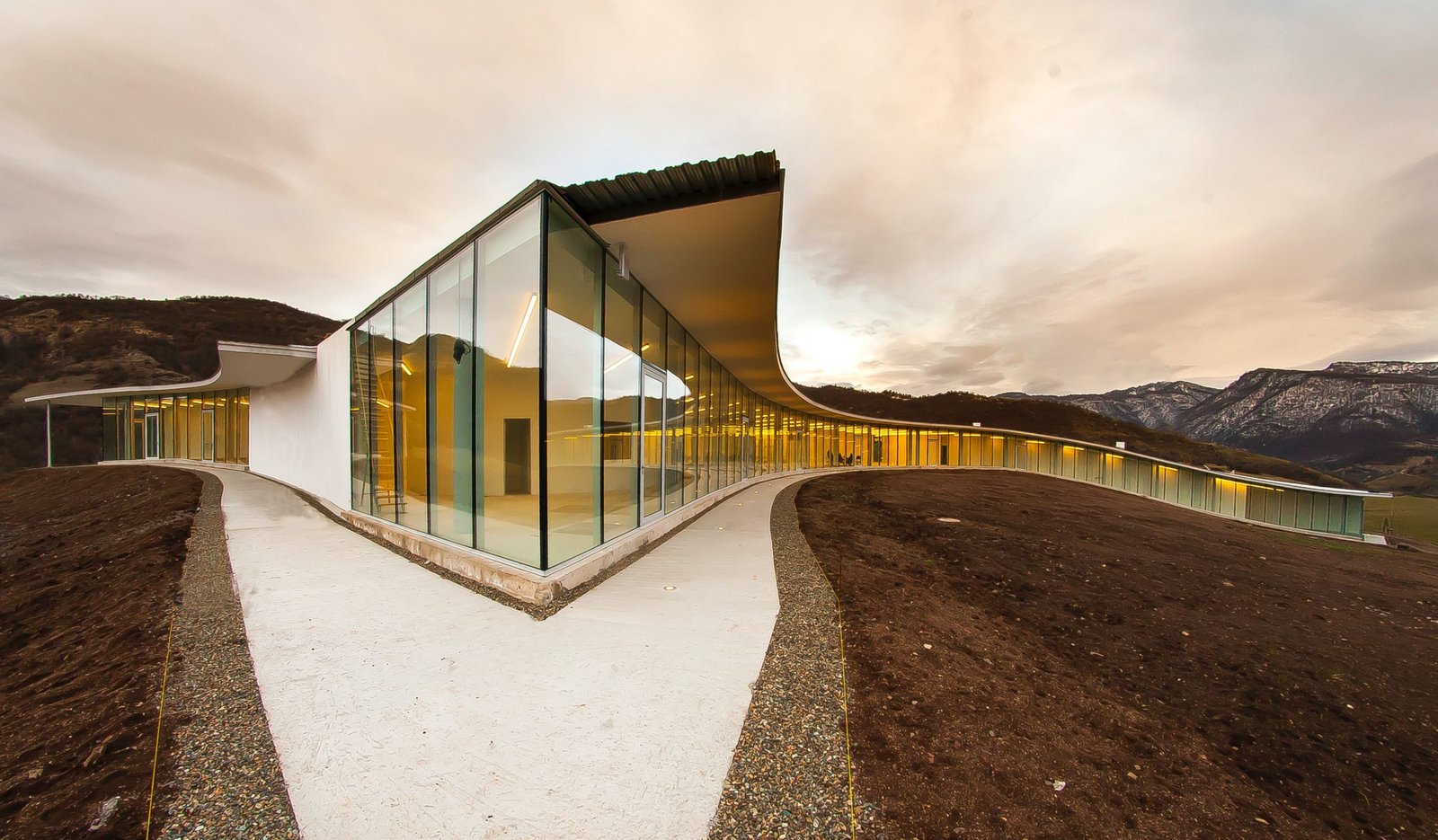
Smart Buildings Technology – Digital Transformation and Innovation in Smart Buildings
As part of this article, we will cover, smart homes, smart cities, smart apartments & smart commercial buildings.
An average household has many things that need to be done and taken care of. Chores such as food prep, laundry, cleaning, and errands are generally looked over or quickly completed, but they all profoundly affect how the family spends their day and life.
A smart home is a home that is automated and can be remotely controlled by a smartphone or tablet.
This allows the family to do everyday tasks without even being home.
For example, a family can use an app to turn the lights on when it gets dark outside and turn the lights off before they come home;
they can set the temperature before one leaves the house and receive a notification on their phone when it gets too hot inside; they can set the
The conjunction of IoT (Internet of Things) with innovative solutions combines a high-performance network with a platform that offers valuable data to provide digital services to improve your life.
By visualizing and analysing insightful data from different domains, cities and organizations gain visibility and awareness to provide accurate information to make timely decisions.
The solutions are possible via prepared and digitalized infrastructure, collaborative and openly shared data, problem-solving analytics, the interconnection between devices and ecosystem, and lastly, the adaptability and flexibility to change.
These solutions are known as smart solutions. It’s not just prevalent in large cities but covers several areas of interest in the same direction by digitalizing the process to become more efficient and make the best possible use of the present resources.
Smart homes with the use of insightful data can provide homeowners a wide range of useful services and applications.
At the core of such systems lies home automotive mechanisms, which have the ability to monitor and control the basic parts of the house like doors, energy, temperature, water-saving efficient systems, lighting/illumination, physical security, at the lowest cost and environmental impact.
To understand this in simple terms, one common example is using data from the building security system to turn off lights and reduce cooling when occupants are not present.
What are Smart Buildings?
Smart buildings are developed by implementing smart solutions for the management of infrastructure. Using devices like sensors and actuators to obtain data from the physical work, a process that information, and make a decision accordingly.
Similar to the home, smart environment applications have also benefited complex buildings like large offices, hospitals, educational centers, and others. The sensors integrated into these environments help to provide information to the staff, teacher, doctor, or any concerned party.
Smart Cities
Smart cities with the use of digital transformation provide more efficient and responsive services to their citizens.
The intention of building smart cities is to use advanced digital and network technology to provide services to meet the needs of the citizens. Smart cities are one of the richest and complicated scenarios for the smart environment.
It includes a variety of domains such as economy, mobility, and environment, along with a massive number of challenges associated with the participation of multiple individuals with different needs and interests.
The technologies are, however, often transversal to all domains and difficulties, and therefore utilizing data of technology solutions and standards is of great importance.
The data generated from all the differentiated interconnected components of the city is openly shared and combined to become valuable services and solutions to improve the city scenarios.
How is it Done?
How To create a Smart City
Building smart cities is the most complex due to the magnitude of these projects.
It’s the reason why a modular and scalable system is required to cover any of the needs by combining four types of solutions that work well together to create a smart city.
The four solutions include a smart environment, smart mobility, smart people, and smart living.
Smart environment involves optimizing natural resources, preserving and safeguarding the environment, controlling and rationalizing energy combustion, pollution control, waste management, and more.
Smart mobility comprises planning and efficiency of public transport, blocking traffic control, management of parking spaces and capacity, prioritization of cities in the field of mobility, and more.
Smart people include having well-informed citizens, an inclusive society, awareness and participation of citizens in decision-making, internet access to public places, e-learning, and more.
Smart living comprises a better quality of life for citizens, guaranteed video surveillance security, natural disasters detection and management, public facilities, and more.
How to build Smart Building
Smart buildings also require the help of technology like digital transformation.
It’s a holistic perspective that puts together the buildings with the ecosystem to service several goals and purposes while also being future-proof.
The focus of building smart buildings involves using technologies to provide excellent solutions to present-day challenges.
Smart buildings are for the evolving society in a non-technocratic culture, but a very human and functional way of security, privacy, and comfort for people.
They use the Internet of Things, sensors, online connectivity to capture & monitor various relevant data about the building.
Post analysis of this data, various insights related to the usage of various building equipment are gathered & proactive actions related to overall maintenance are arrived at.
The IoT allows you to collect data about each & every aspect of your building’s operation.
This can include data related to power, water pipe, waste management system.
More detailed data about your building always helps in arriving at better, meaningful & targeted changes.
IoT & Advanced analytics together helps in making a smart building. Analytics involves machine-learning capabilities.
With the help of these 2 technologies, you can drill into the details of your building’s characteristics.
This can also include/integrate various other data points (from both inside and outside your building, like the weather and various utility information)
With time, you’ll be able to see the impact of the steps you’re taking, which measures are working well, and which may need to be adjusted to achieve the desired performance.
What are the Benefits of Smart Building?
Take the hospital, for instance; the sensor and other devices can be used for medical monitoring for specific purposes.
The devices can be used after surgery or to improve diagnosis and improve the quality of life for elderly and disabled people.
Home automation systems allow the integration of all the building control systems, centralizing them and automating them.
Smart buildings offer a wide variety of benefits, including reducing cost by decreasing energy consumption as well as utilizing more resistant material that helps with longevity.
The smart buildings also respect the environment and integrate with the surrounding in which it’s located.

These are the main objectives of a smart building
- Overall sustainability requirements:IoT platforms can be used to monitor your current energy consumption patterns and analyze the data to produce targeted recommendations for reducing your energy use.
- The same can be done to achieve water-use reduction goals, waste segregation & improve overall sanitization, ventilation & air quality.
- Optimum Energy & Water bills: With IoT & Sensors, you can monitor, light equipment in various common areas, waterbody/fountains etc.
- You can use smart building data to increase efficiency & strategically reduce the overall consumption for optimal building operations and even equipment usage.
- Proper functioning of your critical equipment,you can use sensors to measure various aspects of their operation— this can include working of lifts & elevators, maintenance of swimming pools, various equipment in the gym etc.
Various companies involved in ‘Smart Building
CISCO
Cisco’s “Internet of Everything” mantra is an energy efficiency concept.
Here the idea is to consolidate smart lighting networks and other Internet-connected devices into a centralized dashboard that can be controlled via a smartphone application.
The system includes smart lighting that doesn’t require a separate electricity source
Hitachi
Hitachi has come out with its IoT strategy, based on a technology called Lumada.
Honeywell
Honeywell’s IoT strategy helps to build occupants report issues with heating or cooling.
Basically, people become “sensors” alongside digital counterparts such as sensors.
IBM
With it’s Smarter Planet campaign, IBM is putting the firepower of its Watson artificial intelligence and data analysis software behind its projects that make buildings smarter
Legrand
The French-born electrical component manufacturer has launched its IoT initiative dubbed ELIOT.
Panasonic
They are already involved in green building technologies such as energy-efficient lighting, refrigeration, air conditioning, heating, and renewable energy.
Schneider Electric
They have overhauled their smart building product line called EcoStruxure.
Siemens
They are creating a cloud service to help corporate real estate managers gain access to energy efficiency metrics for their facility portfolios.
Verdigris Technologies
They are using artificial intelligence to collect information from a building’s electrical panels and then analyze these “fingerprints” for opportunities to optimize settings and to predict possible maintenance issues that could boost power consumption.
Some examples of SMART buildings
The Edge Building (Amsterdam, Holland)
The Edge is considered the greenest, most intelligent building in the world, according to British rating agency BREEAM.
If you are part of this building than, this smart building knows
- What kind of car you drive and will direct you to the most convenient parking spot.
- It knows your schedule for the day, including your coffee/tea timings/preferences.
- Here, workspaces are based on your schedule for the day and are assigned as you need them.
This can include, sitting desk, standing desk, work booth, meeting room, balcony seat, or “concentration room.”
when you arrive at these various stations during your day, the building knows your preferences for light and temperature.
- It uses super-efficient LED panels.
Capital Tower, Singapore
The Capital Tower has many smart energy systems which include:
- An air-conditioning energy recovery wheel system which allows cool air to be retrieved
- Motion detectors in the lobby and all bathrooms to conserve energy
- Double-glazed windows that reduce heat penetration and reduce energy consumption
- It uses condensation from the air-handling unit to reduce water usage.
- Smart parking, Smart elevators & pervasive wireless connectivity
Hindmarsh Shire Council Corporate Centre (Melbourne, Australia)
Melbourne is an area of extreme temperature conditions. To take advantage of this, the building has a series of underground thermal chambers and a ventilation system under the flooring to draw in fresh air from the exterior.
The earth naturally cools and warms the air and then redistributes it back through the building interior.
It uses LED lighting systems to reduce energy consumption.
Also, here, rooftop solar panels harvest energy from the sun. Vertical green walls enhance the indoor air quality.
DPR Construction (San Francisco, California)
This smart building has Among its many green features, you will find:
- Net-Zero Building (NZEB) Certification
- Rooftop solar thermal water heating system
- Electrochromic windows
- Solar-powered, automated skylights over an atrium
- Ultra-energy efficient ceiling fans
- Ultra-low flow and flush plumbing fixtures
The Crystal Building (London, England)
Its main feature includes
- For this smart building, the annual heating bill is zero.
- It emits 70 percent less carbon dioxide.
- 100 percent of the water in its toilets is recycled.
- It spends 46 percent less on energy than any other building of its size.
- It generates its own energy with the use of solar panels and ground heat pumps.
- It collects rainwater to maintain its bathrooms and irrigation system.
Conclusion: Smart Building
A smart building is one that uses various technologies
( IoT, sensors, Machines with computer vision & corresponding analytical software ) to capture & share information about what goes on in the building ( between various systems, equipment etc).
This information is then analysed and various actions (efficient usage of power, ventilation, water, security… ) are taken.
You may also like
What is Learning Organisation? Is Your Company Ready for the Future?

